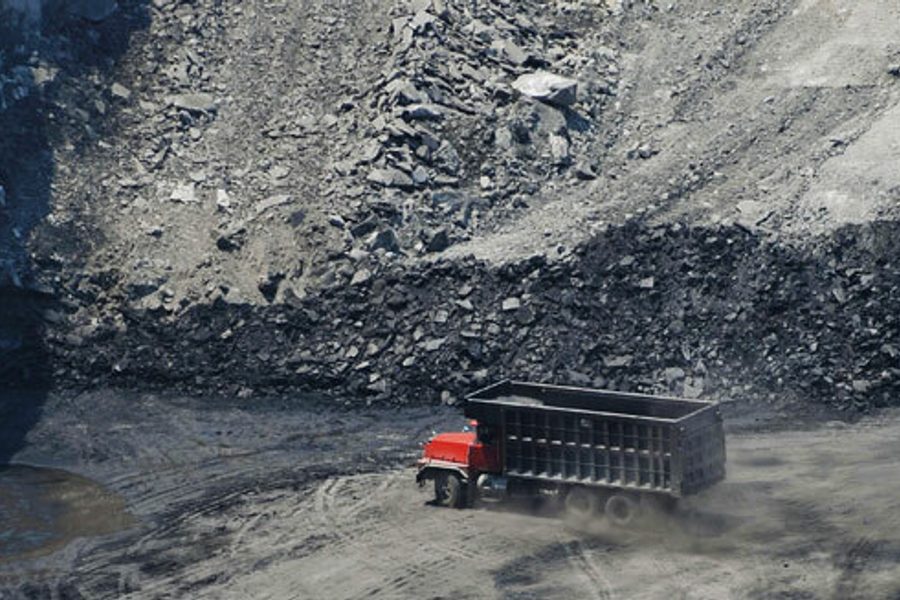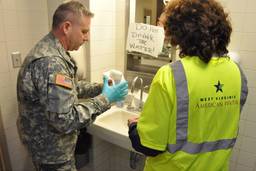
The decline in union coal-mining jobs in Appalachia has coincided with a big increase in mountaintop removal mining. But only the latter trend has stirred much passion beyond the region, though both have devastated the region’s communities.
In June, several well-known outsiders, including top climate scientist James Hanson, were arrested protesting the practice, which changes the very topography of the land as mountains are literally blasted apart and tons of debris suffocate mountain streams and fill the air with toxic dust.
Chuck Nelson knows all about these trends. For two decades he was an underground miner and a proud member of the United Mine Workers (UMW). During those years he said he participated in the “one for all, and all for one” union culture, joining numerous job actions to protect all miners’ right to a union card.
Nelson was born and raised in the town of Sylvester, West Va., when it was a UMW stronghold. Now it’s a stronghold of Massey Energy, a company that, starting in the 1990s, bought many mines in Sylvester, often closing them down and reopening them as non-union operations.
“Massey started weeding out the union guys, and a lot of them lost their jobs,” he said. Rather than take a non-union gig with Massey, Nelson said he took a job as a contractor for more than a year — what he calls “rent-a-miner,” making $11 an hour with no health insurance.
After being sent to a Massey mine as a contractor he was offered a job, which he took because at least he got health insurance. But when the West Virginia Department of Environmental Protection gave the company a permit to blow the top off a nearby ridge to begin surface mining (or “mountaintop removal mining” as critics call it), Nelson began organizing:
They made a stockpile on top of the ridge and whenever the wind would blow, it would cover the whole town with coal dust — a quarter-inch to a half-inch on everything. I knew if I complained, my job was history, but I made up a petition to get community members more involved, hoping somebody would be a leader, where I could lay low.
But then I had to testify at DEP and Surface Board hearings and I sat across the table from Massey. I had been out with a back injury and when I went back to work they took my job away from me
That was in 2000. After Nelson had to stop working as a miner due to his injury and successfully fought UMW for his pension, he said, “I could do anything I wanted to do.”
He and his brother began shooting video of the surface mining operations, showing the use of tons of explosives to blow the tops off, and the draglines — enormous machines that eat their way through the mountains. They showed the streams buried under the waste that rolled down the mountainsides after the coal was removed from the seams. Their video was shown on local television.
Eventually Massey agreed to the brothers’ demands that the company buy their homes.
“Even though I’d lived there all my life,” Nelson said, “I wasn’t going to sit there and breathe dust that had been washed in all these chemicals. It goes right in our lungs, and my wife has asthma real bad.” After selling his house to the company, Nelson built a new one, 30 miles away.
Data from the federal Energy Information Administration show that for 2007 (the latest year available), of 34,500 underground mining jobs, just over 10,200 were unionized; while of the 18,300 surface mining jobs, just 1,500 were unionized. In the 1940s, the UMW had about 500,000 members nationally, although most were in Appalachia.
Phil Smith, communications director for UMW, said the union has no position on mountain-top removal mining. “We don’t make decisions about how coal is mined,” he said. “We just mine the coal, and we want to preserve those jobs.”
He acknowledged that it takes between 60 and 70 workers to mine a ton of coal by surface mining, compared with 100 workers to mine the same amount underground.
“They’re taking the miner out of coal mining,” Nelson said.
Nelson appreciated climatologist Jim Hansen’s appearance at the June protest of mountaintop removal mining within 300 feet of Marsh Fork Elementary School. (Go here for a story about that. “We got arrested together,” he said, chuckling.
Nelson is still surrounded by mountaintop removal mining, and he’s still fighting, now as a volunteer organizer with the Ohio Valley Environmental Coalition.
“Mountaintop removal should be banned today — it should have been banned a long time ago,” he said. “It should never have got started. It’s total devastation. It destroys everything: communities, water, the hardwood forests, the ecosystems, the headwaters. Why should the community sacrifice everything we have for a job?”








